“Any sufficiently advanced technology is indistinguishable from magic.” – Arthur C. Clarke
At the San Francisco Exploratorium there is a drinking fountain made from a toilet. It’s a brand new toilet, fed by the cold, pure waters of the California coast range, yet oddly disturbing. Would you bend your head and take refreshment?
Modern plumbing must be somewhere near the apex of civilization, carrying away everything smelly and unclean, and freeing us from water-borne disease. Stuff just goes away and we don’t give it another thought. “Water is the universal solvent” my chemistry teacher said.
But water and waste don’t really go away. For much of the world it’s a good rule of thumb to live upstream. Here in Canada, we have the high technology to clean and polish our effluent, and voilà, it’s ready for “recycling”. I’m quite in awe of this process: huge volumes, unusual innovations, and bursts of controversy.
In the Okanagan, almost all (85%) of the water we take from the lakes and streams has a different fate: “consumed” by irrigation – growing food, green lawns, and golf courses. Whatever isn’t stored as “virtual water” in peaches and wine is evaporated from plants, and re-enters the atmosphere, rising to the clouds and floating gently east to rain on Kootenay Lake.
Most of the rest enters a diversion in the water cycle: flowing first to our faucets and toilets, then traveling onward to the treatment plant, where technology meets science fiction. There, vast ponds of specially-cultured bacteria remove the nutrients, and we disinfect the result with chlorine or a dose of UV radiation.
As an aside, specialized vats of bacterial cultures are like the holy grail to a certain type of inventor. I’ve met several of these men, wide-eyed and moustached, talking energetically about patents. It seems our society is divided into two groups: those who are madly enthusiastic about wastewater treatment, and those who are mostly in denial.
Here in Kelowna, 40 million gallons of sewage are transformed into clean water every 14 hours. As Arthur C. Clarke might say, it’s “indistinguishable from magic.” In the end, we get a huge supply of highly treated water – by many measures cleaner than anything in nature – but what to do with it next?

A reflecting pond of recycled wastewater proudly ornamenting the National Capital Building of Australia.
I live close to the treatment plant. From the street, all is serene: willow trees overhang a grassy berm, sloping to the natural stream along the sidewalk, with ducks and cattails. At the lakeshore, there’s a small park where the outfall pipe enters the lake. In Kelowna, as elsewhere, the basic choice is whether to use the recycled water for irrigation, or release it back into the wild.
Irrigation is an elegant solution, replacing the use of fresh water, growing crops or golf greens and evaporating the excess. There’s also a slow and steady movement toward “purple pipes” – double plumbing that lets new neighbourhoods use reclaimed water on their lawns.
The beauty of irrigation is that the powerful forces of the soil food web are the best way to remove any remaining impurities. In California, some of the finest wines and best organic produce are raised on recycled water. Israel grows 30-40% of their crops with it. Here, it is more complicated. Health officials aren’t all convinced, and fruit growers are concerned about market perceptions.
Perhaps a bigger obstacle is the cost to get the water to fields or neighbourhoods for irrigation. Treatment plants are typically at the bottom of a valley (the first rule of plumbing is that “waste flows downhill”). To recycle it, water has to be pumped to a holding reservoir and distributed through miles of pipes.

Wastewater reuse increased sharply during Australia's 10-year drought. The left axis is Gigalitres/year.
Many communities in the Okanagan have gone this way, beginning with the City of Vernon in the 1980s. Kelowna is gradually expanding wastewater irrigation to the parks and ball fields around the plant. In the Village of Armstrong at the head of the lake, they don’t remove all the nutrients, and there is a waiting list of farmers who want the mutual benefits of fertilizer and irrigation for their hay fields.
Any water that isn’t used for irrigation is returned to one of the lakes, or the Okanagan River. As the slogan goes: “dilution is the solution to pollution.”
On one hand, direct discharge is even more elegant than irrigation – clean water replenishing the source. It is the least costly (minimal pumping, no extensive piping system), and takes far less energy. The controversy has to do with aesthetics, chemistry, and risk-tolerance. I like to say that the difference between Victoria, Vancouver, and the Okanagan is that they dump their wastewater into the Pacific, and we drink ours. Not everyone is comfortable with this.
I understand the controversy on both sides. Like drinking from the toilet fountain, it’s hard to be rational about connecting wastewater to our drinking source. This is not true everywhere. In Singapore, for example, treated wastewater is bottled and marketed as a high quality product.
As for chemistry, people are concerned about the health effects of residues from pharmaceuticals, plastics, and personal care products (a.k.a., endocrine disrupting compounds), only partly removed by the treatment process. Should we worry? Our approach in the Okanagan is to get a baseline on what the residue levels are, and wait for guidance on how these levels translate into risks to humans or the environment.
Of course, our main exposure to these compounds is what we directly ingest from pills and plastic wraps, or slather on our face and comb through our hair as beauty products. Somehow it is easier to worry about chemical traces in the water (à la Erin Brockovich) than to think about what’s in my Oil of Olay. There’s a terrific book about this by Rick Smith and Bruce Lourie: “Slow Death by Rubber Duck.”
For me personally, the most important factors for direct discharge are maintenance and risk-reduction. When the treatment plants are tuned up and running well, the seething ponds of bacteria, chlorine shocks and UV radiation do a beautiful job cleaning the water. This takes dedication, upkeep, and a steady flow of dollars as long as there are people living in houses and flushing toilets – running 24/7 for centuries into the future. There are back-up systems, and safety checks, but eternal vigilance is the price of security. We have top-line plants here, and as a community we should value and cherish them, assigning the best personnel, and priority funding.
Despite all the options, it’s always encouraging to hear about new approaches. The big news last month was that the new plant in Okanagan Falls will be discharging into an engineered wetland instead of the Okanagan River.
The wetlands, still under design, will invite wild ducks and other birds along the flyway, and be a beautiful buffer and a natural added treatment for water coming from the plant. One of the largest treatment wetlands of this kind, in Arcata, California, is a famous park and bird sanctuary, where families with binoculars wind through the boardwalks. To me, this is the most elegant of all the solutions for our wastewater. Still magical, but somehow less like science fiction. It will be a treasure for the area and bring extra peace of mind to everyone downstream.
Green infrastructure can have higher up-front costs, but the long-term payback – protecting against spills, providing highly polished water, and a healthy wildlife refuge – is value beyond measure. While not every community has the space for a treatment wetland, it is great to see Okanagan Falls seizing the opportunity.
“Between earth and earth’s atmosphere, the amount of water remains constant; there is never a drop more, never a drop less. This is a story of circular infinity” – Linda Hogan

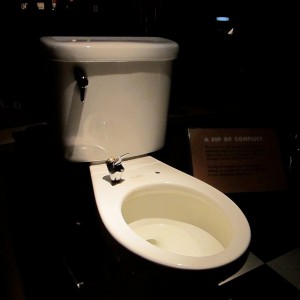
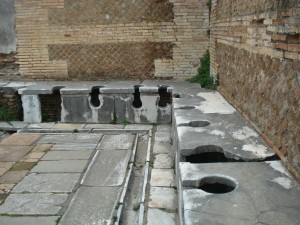
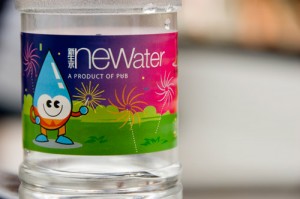
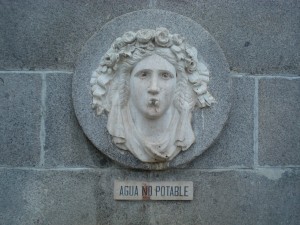
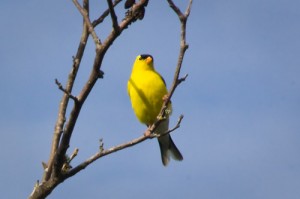

Anna
I like this article. Just wondering how best to use my wetland to best ‘showcase’ the value of wetlands? Any ideas?
Bill
Hi Bill! Why don’t you send me some pictures? While I was working on this post, I was thinking there is much more to say about wetlands, and I should write something just about them. Yours is lovely. Anna
Hi Anna,
I’m studying Civil Engineering at the University of Manitoba and I’m doing a project on integrated watershed management in the Okanagan Basin. I thought that this post was very interesting, especially the idea of using nitrogen rich treated wastewater for irrigation. Would you be willing to recommend any further reading on water management in the Okanagan Basin?
Thanks!
Hi Steven,
There is a huge amount of material on integrated water management on our website(www.obwb.ca). You might start with the Okanagan Sustainable Water Strategy (http://www.obwb.ca/water_strategy/). If you want a more civil engineering kind of review of wastewater management, please email me directly. I don’t think we have it posted on the web.
Best wishes, Anna
Here is a great link from one of my favorite U.S. water blogs, Thirsty in Suburbia. International sewage crises! $42 million dollar Gates prize available for the inventor who finds a solution! http://blog.gayleleonard.com/2012/04/an-eye-pooping-infographic-on-water-and-sanitation-challenges/